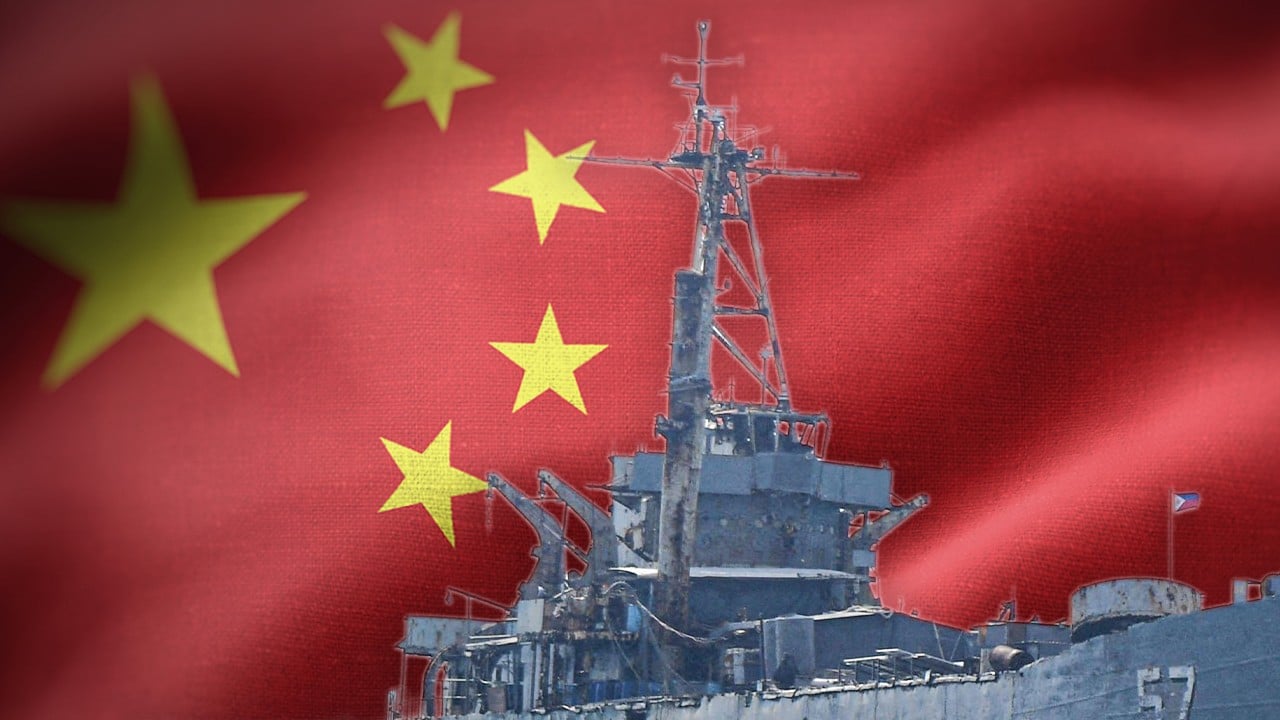Philippines, US launch live-fire drill with South China Sea in sight to show unity
Major Jason Burgess, the officer-in-charge of the US Army’s 1st Multi-Domain Task Force (1MDTF), said after the drill that the joint live firing underscored the strong partnership of both armies.
“We train together side by side. Fires and artillery are the future of a conflict. I think today is a great example of how we build those ties and become effective in synchronising should a crisis occur,” Burgess said.
“We look forward to further increasing the amount of training that we will do together,” he added.

The drill was part of Salaknib, an annual bilateral exercise led by the Philippine Army and the US Army Pacific.
Such exercises reflect the intent of the 1951 Mutual Defence Treaty that calls on both countries to help each other in times of aggression by an external power. In previous pronouncements, the Pentagon said it was prepared to assist Manila if the treaty was invoked amid threats from other nations.
The HIMARS platform, which entered into service in 2010, can be equipped with six 227mm (8.9 inches) guided missiles, two precision strike missiles or one MGM-140 Army Tactical Missile System.
Chester Cabalza, a security analyst and president of the Manila-based International Development and Security Cooperation, told This Week in Asia that the training of Philippine soldiers on HIMARS operations represented a significant step for defence interoperability and shared technology.
“It values symmetrical learning by playing the same war games and advanced defence weapon systems. With common tradition in military and simulation exercises, shared skills have advantages for a collective response to any military threat between the two allies,” he said.
“It does not mean that both armies are preparing for a target country but for general scenarios that may threaten the territorial domain of the Philippines,” he added.
The drill came two days after the Philippine navy reported China’s extensive militarisation of around 3,000 hectares of reclaimed land in the South China Sea, including bases built on artificial islands within Manila’s exclusive economic zone.

All the bases feature facilities ranging from airstrips and seaports to fuel depots and resting facilities for troops, giving Beijing the ability to position their warships and aircraft in the West Philippine Sea, Manila’s term for the part of the South China Sea that lies within its exclusive economic zone.
Global security analyst Joshua Espeña said Washington was helping the Philippine Army artillery units to understand the HIMARS at the tactical and operational level, and how it could be integrated into combined arms training with other ground warfare systems.
“This shows that the Americans stand with the Filipinos’ development of external defence concepts, not just at sea but also on land,” Espeña said.
Manila and Beijing have been locked in an increasingly contentious territorial row in the South China Sea for several months.
In the latest clash on June 17 between the Philippine navy and Chinese coastguard at the disputed Second Thomas Shoal, several Filipino sailors were injured with one suffering a severed thumb. The Philippine navy personnel were trying to resupply troops stationed at the BRP Sierra Madre, a dilapidated vessel placed by Manila on the shoal.
The US recently announced US$500 million in military funding to the Philippines to help modernise its armed forces and coastguard.
Meanwhile, Marcos Jnr met two members of the US Congress, Representative Michael McCaul (Texas) and Representative Addison Graves Wilson (2nd district of South Carolina), at the Malacañang Palace to extend Manila’s appreciation for the continued American support for the Philippines.
Espeña said the drills involving the Philippines and US personnel were in tandem with the Comprehensive Archipelagic Defence Concept, Manila’s new defence strategy for its exclusive economic zone. Such drills also arose from the US military experience in the Middle East, he added.
“This intent from the Americans resonates with their Philippine counterparts whose interests lie in the Americans keeping up with their commitment to develop collective deterrence,” he added.
